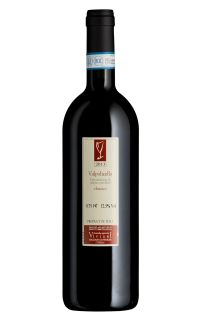The Viviani family owns ten hectares of vines in the famous Valpolicella Classico region's hamlet of Mazzano. The family's vineyards are exposed to the southeast and are positioned at an elevation of about 350–450 meters above mean sea level, which provides the greatest conditions for vine development. Additionally, the dry air and well-ventilated location facilitate the drying of the fruits for Recioto and Amarone. The Viviani family wants to maximise all of the capabilities of their land, especially by using viticultural techniques that will enable the vines to develop as naturally and harmoniously as possible and produce grapes of the highest calibre. This entails gradually discontinuing therapy using artificial substances like fertilizers and pesticides.
The Classical region of the Valpolicella stretches northwest of Verona, forming four different valleys. Warm winds from Lake Garda and pure air from the Lessini mountain range collide in the valleys to create an ideal microclimate for the production of vine, plum, and olive. This warm climate during winter and autumn also encourages the gradual and persistent withering that fruit trees must undergo to produce a Recioto and a magnificent Amarone. The Viviani family's vineyards are planted on terrain that can be described as having a medium composition, with a good concentration of limestone and a steady prevalence of rocks beneath the first half meter of the land.
The vineyards are around 20-60 years old, are trained in the French guyot method, and have six to ten buds per vine. The best grapes are carefully harvested and placed in specialised containers referred to as plateaux. These are placed in particular spaces called fruttai, where withering starts and lasts for roughly 3–4 months under natural conditions. When the grapes' concentration is correct, they are crushed in a press with rubber rollers to make the pressing as gentle as possible. Following this process, the crushed grapes are added to the fermentation vats, where fermentation typically starts a few weeks later. The subsequent maceration lasts for roughly forty days and includes the essential repassing and punching down. Later they are stored in Oak barrels.
https://www.cantinaviviani.com
Find out more

















